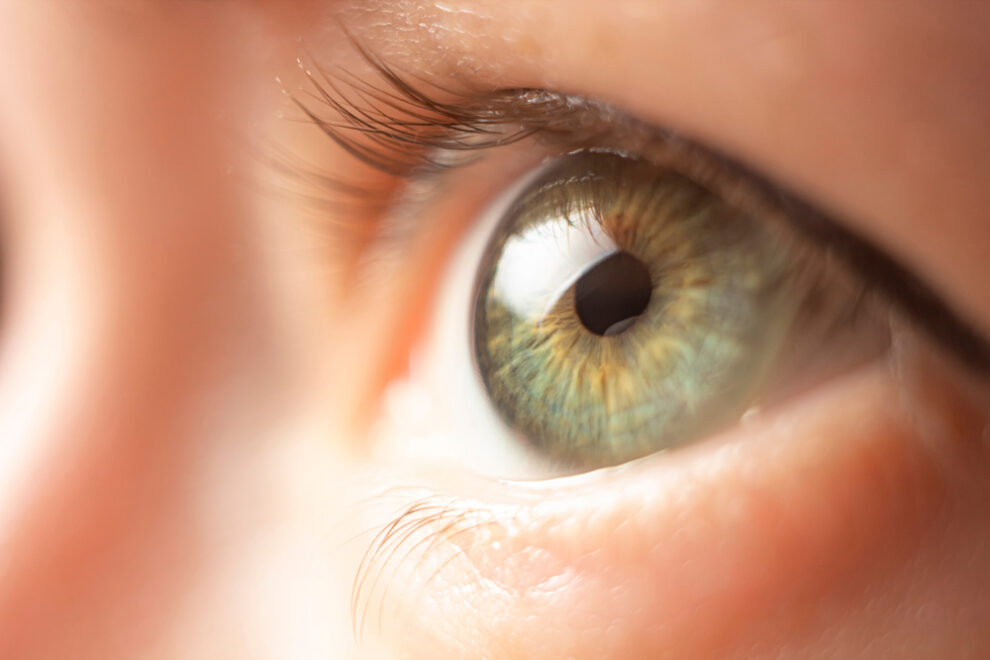Retina

What is the Retina?
The retina is an essential part of the eye, comprised of a thin layer of tissue lining the back of your eye. It contains light-sensing cells that can take the images you see and send them to your brain to process them into signals that can be seen appropriately. The retina is crucial because it allows you to see shapes, movement, colors, and light. It takes the light that comes into the eye and converts it into electrical impulses. These electrical impulses are then passed along to the optic nerve and your brain.
How Does the Retina Work?
The retina works using complex processes that start with light entering your eye. First, light passes through the lens in your eye, focusing on the retina. Then, the retina converts the light you see into electrical signals by using photoreceptor cells: rods and cones. Rods detect motion and brightness, and cones help you detect colors.
Your photoreceptor cells will connect with other cells in the retina, including bipolar cells and ganglion cells. Bipolar cells collect signals from the photoreceptors before passing them onto the ganglion cells. Axons of the ganglion cells make up your optic nerve. Your optic nerve carries signals to the brain and converts these signals into the images that you see.
All these specialized cells work together in the retina to ensure you can see the world around you.

Common Conditions Affecting the Retina
Although there’s no denying that the retina is an incredible part of why the eyes work so well, various retinal disorders can affect your vision and ability to see. Some common conditions that can affect the retina include:
Diabetic Retinopathy
Diabetic retinopathy is an eye condition that can occur in patients with diabetes. It happens when blood sugar levels are too high, which causes damage to blood vessels in the retina. Because of this, the retina can no longer function correctly, leading to vision loss. Those with diabetic retinopathy may experience other problems like floaters, blindness, and declining vision if the eye condition is left untreated.
Flashes and Floaters
If you’ve seen tiny specks floating or clouds moving around in your field of vision, you’ve witnessed floaters. Floaters are clumps of cells or gel inside the vitreous. The vitreous is the clear gel that fills your inner eye. Flashes look like flashes of light or sparks that flicker or move quickly across your visual field.
They typically occur when the vitreous pulls or rubs against your retina. Flashes and floaters are usually harmless and an annoying part of your vision. However, if you start seeing far more flashes and floaters than usual in a short time, it could be a sign of a retinal detachment. A retinal detachment requires immediate medical attention to prevent permanent loss of vision.
Macular Degeneration
Macular degeneration, also called age-related macular degeneration, is an eye condition that affects central vision and the ability to see fine details. It occurs when the macula begins deteriorating. The macula is responsible for sharp vision. There are two kinds of age-related macular degeneration: wet and dry. Of the two, the more common is the dry form.
Dry age-related macular degeneration occurs when light-sensitive cells in the macula slowly begin breaking down. Wet age-related macular degeneration develops when abnormal blood vessels grow under the retina. These abnormal blood vessels usually leak blood and fluids and cause more rapid vision loss. Treating wet age-related macular degeneration may include laser procedures, injections, or a vitamin supplement regimen.
Expert Retina Specialist in Pittsburgh
Depending on your diagnosis and retinal condition, your North Park Ophthalmology retina specialist may recommend injections or a surgical procedure. If you have a health condition like diabetes and diabetic retinopathy, you’ll need to keep your blood sugar under control. Steroids or anti-VEGF injections are used to reduce swelling and the growth of abnormal blood vessels in the retina.
Laser procedures can help destroy abnormal, leaking blood vessels. An AREDS vitamin regimen may help slow down vision loss. If a retinal detachment occurs, surgical procedures may become necessary to prevent permanent loss of vision. Remember that eye exams are crucial in ensuring any retinal eye conditions are detected as early as possible and treated before vision loss can occur.
Plaquenil Checks
Plaquenil is a medication often used to treat autoimmune conditions. However, those on the medication must also have their vision checked regularly. After a prolonged period of use, Plaquenil can damage the retina and cause vision loss in some patients. Your North Park Ophthalmology eye doctor will conduct an eye exam to check for signs of Plaquenil toxicity.
Checking for signs of toxicity in the retina will happen early on to ensure there are no signs of permanent damage. During your eye exam, your North Park Ophthalmology eye doctor will look for changes to your color vision, loss of any retinal nerve fibers, and accumulated waste products from cells. If you stop taking Plaquenil, this can prevent further damage to your vision if it has already occurred.
